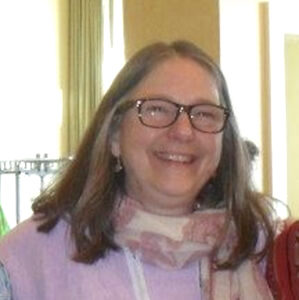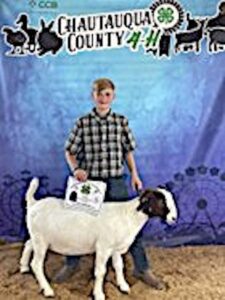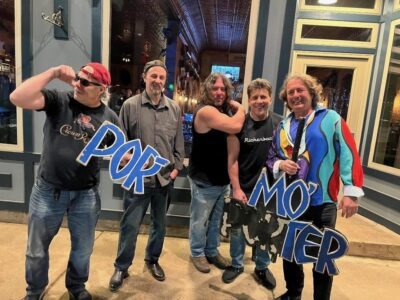‘Healing with Music’ discussed at Shakespeare Club

Lisa Mertz
Earlier this fall, President Joan Larson called to order the second regular meeting of the 2023-24 Fredonia Shakespeare Club with 17 members present. The meeting was held at the home of Joyce Haines. The presentation “Healing with Music,” was offered by Lisa Mertz.
Mertz is a Licensed Massage Therapist and Reiki Master/Teacher with an advanced degree in anthropology based on studies of cross-cultural healing practices. Her presentation drew from the music of various cultures including Tibetan, Siberian, and African.
Music is usually used by massage therapists — who can be thought of as “sensory specialists” — to create a space for healing using color, aroma, soft lighting, and comfortable linens along with our human touch. Intentionally listening to music with healing qualities can enhance our healing process physically, emotionally, mentally, and spiritually.
Composer Kay Gardiner was a significant pioneer in the women’s spirituality movement of the 1970s as well as in the realm of healing music starting with her first album Mooncircles (1975). Lisa Mertz’s presentation focused on Kay Gardiner’s Nine Elements of Healing Music from Music as Medicine: The Art and Science of Healing with Sound (1997).
The Gardiner Nine Elements are the following:
1. The intention to support healing is the most important element of any healthcare practice.
2. Drone is a sound underneath the music that forms the “bed” on which the music lies. Drone instruments include bagpipes, the tamboura, and the didgeridoo. Kay Gardner says the drone can touch us deeply in our physical bodies, helping break down blockages and tensions, and even free us from physical pain.
3. Repetition which offers a hypnotic/relaxant effect that can move the listener into a receptive healing state. Body workers, yoga teachers, and other healthcare practitioners may play New Age genre music, which uses repetition to help their clients relax, center, and focus on their healing process.
4. Harmonics, also called overtones, are the most mystical of all musical elements and as such are the most spiritual. The function of harmonics is to balance the many layers of the body. This music, because of its ethereal character, is healing to the spirit.
5. Rhythm: Kay Gardiner pointed out that most musical rhythms are directly related to the pulses in our bodies. Through the phenomenon of entrainment, our hearts can beat in sync; our brain waves can be moved into meditative states.
6.Harmonies contain music’s emotional content. Music with simple harmonies is generally more restful.
7. Melody: Kay Gardiner says, “a gorgeous melody can lift you right up out of your body.” The right melody can even be a pain reliever. Roswell Park Cancer Institute’s music therapists employ melodies to support their patients.
8. Instrumental Color: Because each musical instrument has a quality of sound that is unique to it, each will touch us in a different way. Feeling how instruments can touch us throughout our bodies helps us choose music and sounds that can accompany healing work.
9. Finally, form is the structure underneath all of the other elements. Kay Gardiner felt that cyclical forms are the most healing, because the listener is carried through an ebb and flow of the spiral designs of nature.
Mertz played pieces of music which express these elements. For example, repetition is a characteristic of a mantra such as the Padmasambhava Mantra (or Vajra Guru Mantra). In Tibetan the sounds and words are Om Ah Hung Benza Guru Pema Siddhi Hung. This mantra has a particular affinity for clearing away obstacles by calling on the compassion of the great guru Padmasambhava who introduced Vajrayana Buddhism to Tibet and established the first monastery there.
From the album Naked Spirit, “Siber Shaman,” by Sainkho Namtchylak is an example of Tuvan and Mongolian throat/overtone singing. This recording includes drum, mouth harp, and other traditional instruments. Sainkho Namtchylak was born in a small mining village in the former Soviet Republic of Tuva in Southern Siberia. In college, she studied Siberian lamaistic and shamanistic traditions, as well as throat/overtone singing. In an interview she said she hopes “the young high-tech generations [will] turn their minds to their ancient spiritual roots.”
It’s hard not to dance when hearing this example of rhythm: “Edunmare” from the Healing Sessions album by Babatunde Olantunji and the Drums of Passion ensemble. Born in 1927 in Ajido, a fishing and trading village in Nigeria, Babatunde Olatunji was immersed in Yoruba culture. In 1950 Mr. Olatunji received a scholarship to attend Morehouse College in Atlanta. Healing Sessions was recorded in 1992, before he began a long experience with diabetes. He died at Esalen Institute in April 2003.
Going a bit beyond Gardiner’s elements of healing music, the “sound bath” is an ancient healing practice which has become widespread nowadays. Using instruments such as Himalayan metal bowls, crystal bowls, gongs, chimes, bells, didgeridoos, and other percussive instruments, a sound bath immerses the listener in waves of frequencies, resonance, and reverberation that can deepen the meditative state and take the listener on a healing journey.



